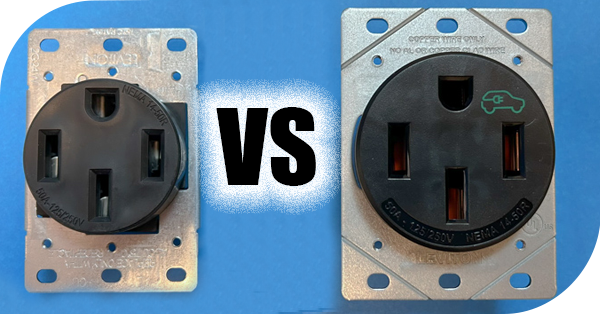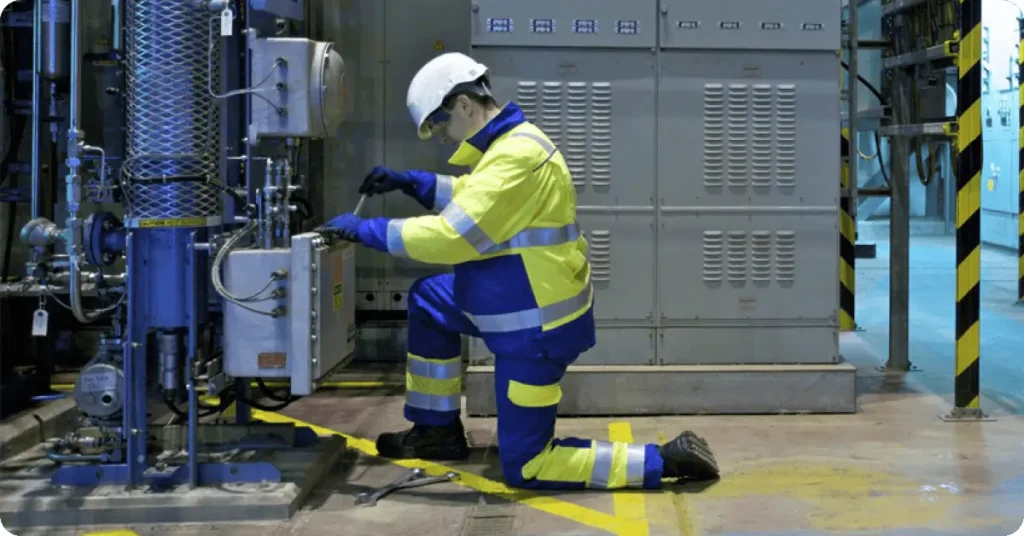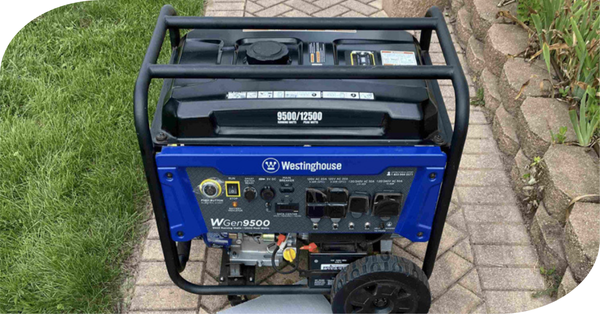NEMA 14-50 Receptacles have been quite the topic for discussion lately. The growing number of melted EV charger plugs and receptacles has been causing concern amongst homeowners and installers alike. Manufacturers agree that the cause of these melted and burned Nema 14-50 receptacles has to do with the installation rather than a design flaw. The issue is twofold and I’ll briefly explain why. For more general information on everything you need to know about these funky receptacles, see my article here. The good news, is that Leviton has made a 14-50 EV variant of this receptacle that is far more robust.
Now I don’t know how far receptacles are pushed in UL tests, hopefully I can get some information on that and publish it here soon. If we assume its 50A, which the receptacle is rated for, any more than that would put the device in jeopardy of failure. When we’re dealing with a range (stovetop and oven combined) we’re probably not really pushing the device to the full 50A. Even if we are, it’s only for a relatively short period of time.
If we plan on using anything for more than 4 hours, we need to increase the capacity of our wiring and devices by 25%. This is an NEC requirement. Why is this important? Because an EV charger IS likely using the full 50A (unlike our range), and it IS likely using that full load for more than 4 hours (again, unlike our range).
Burned 14-50?
What is causing all of these burned and melted 14-50 receptacles? If you ask the manufacturers, the issue is twofold. The EV chargers are overloading the receptacles AND installers are not using appropriate torquing tools to install them. The terminals on any device need to be tightened to a specific torque as specified by the manufacturer. Many times, an installer makes the terminals too tight (sometimes too loose), and this causes the terminal to get hotter than it is rated for. Take a look at the installation instructions on a typical NEMA 14-50:
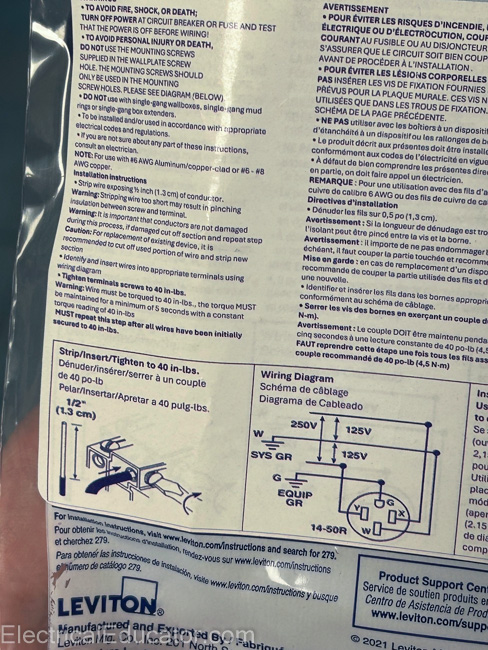
It is on the device as well:
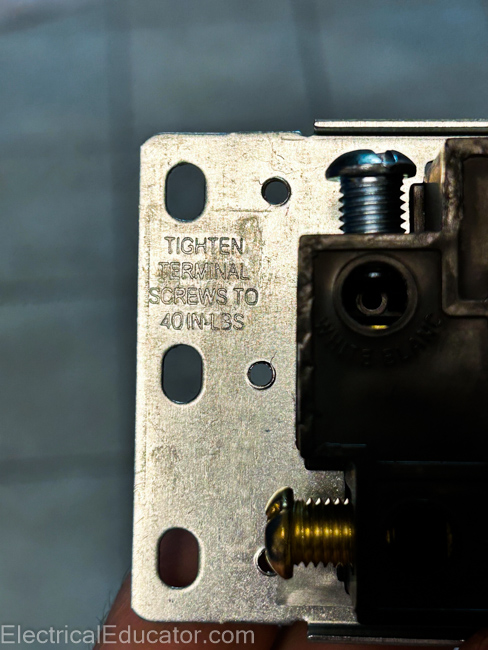
Now, how many electricians out there do you think are using a torque tool to make sure these are at 40 in-lbs? The answer is not many. So what happens when we don’t get the torque just right? The NEMA 14-50 fails; commonly they melt and burn. Keep in mind, torquing too loose AND too tight both lead to failure. Here’s one we encountered right as I was preparing this article:
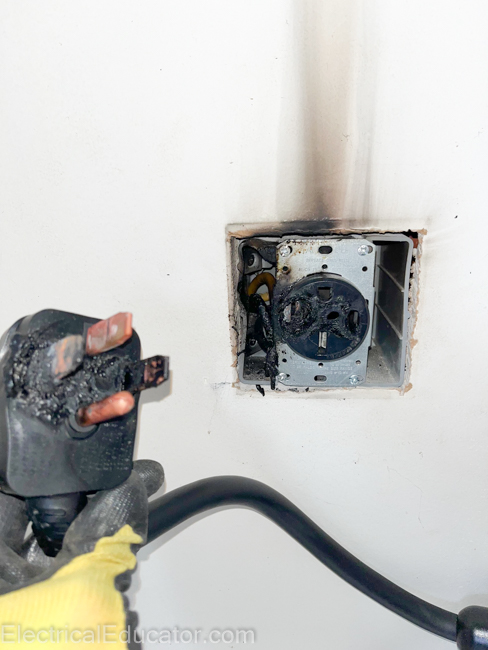
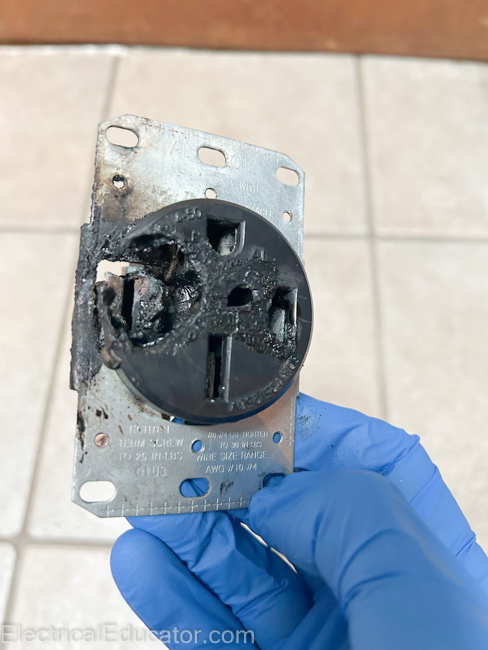
The Leviton NEMA 14-50 EV
Leviton, the device company we all know and love came up with an answer to solve the burned 14-50 issue once and for all. They developed a remarkably robust variant that can handle the constant load and more. The receptacle is physically larger and far from your average 14-50. Can you tell in the picture below which is the EV Variant? Yes, that was my attempt at humor.
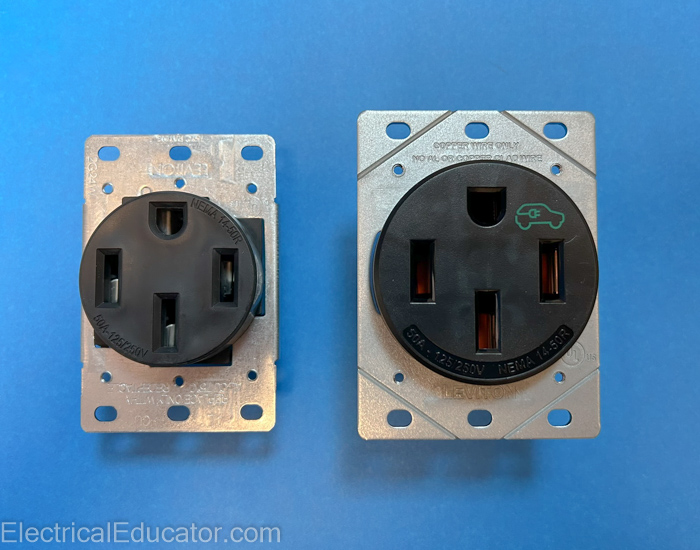
Right off the bat we can see some visual differences. Obviously the EV 14-50 is larger and has a little EV logo on it. But look inside the actual inlets of the receptacle. All copper on the EV variant. If you read across the top, the EV variant accepts ONLY copper (CU) wiring. This alone makes a huge difference. Leviton has eliminated any possibility of overheating due to dissimilar metals.
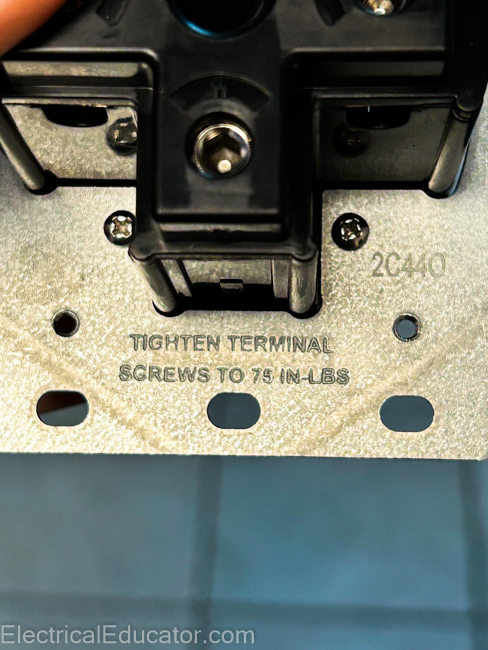
What’s more? The terminals are beefier and can be torqued down to 75 In-Lbs! That’s nearly double the torque specification of a typical receptacle.
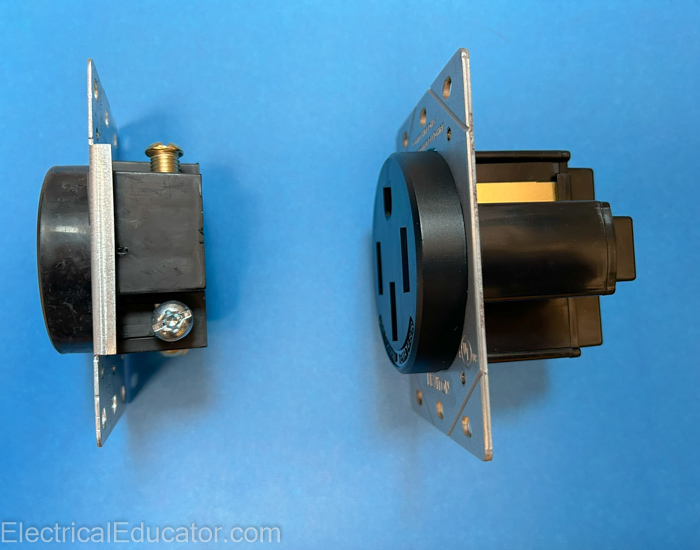
In a side by side, literally here, we can see how much thicker the EV variant is. Also notice how the EV variant has hex screws versus the typical Phillips/#2 on the regular 14-50? This makes life easier when torquing, especially when getting to 75 in-lbs.
More Differences
When comparing the specification sheets of each of these receptacles, we notice that they are actually made up of different materials. The regular receptacle is made of thermoplastic. This has been the standard for years. The new EV model is made of nylon. Nylon can take more of a physical beating than thermoplastic. It doesn’t have a tendency to crack and typically nylon has a greater heat resistance. Let’s not get in to UL fire ratings, that’s a whole can of worms.
Closing Thoughts
As an electrician, I’m glad to see a company like Leviton has stepped up to create a receptacle that fills the void. A lot of folks in my industry have a bad taste in their mouth because of the issues with the standard 14-50 receptacles. Many electricians refuse to do receptacle installs altogether and opt to only hardwire units with a disconnect switch.
I personally like the idea of having a receptacle. As a homeowner, if you need to replace the charger, you don’t need to call an electrician, you simply unplug the old one, and plug in the new one. It’s all personal preference at the end of the day though!
If you’re considering wiring your charger with a receptacle, DEFINITELY go with the EV variant. It is well worth the extra money. And make sure your electrician torques it! As always feel free to reach out if you have any questions or suggestions for me, I’m always open. Thanks for reading!

